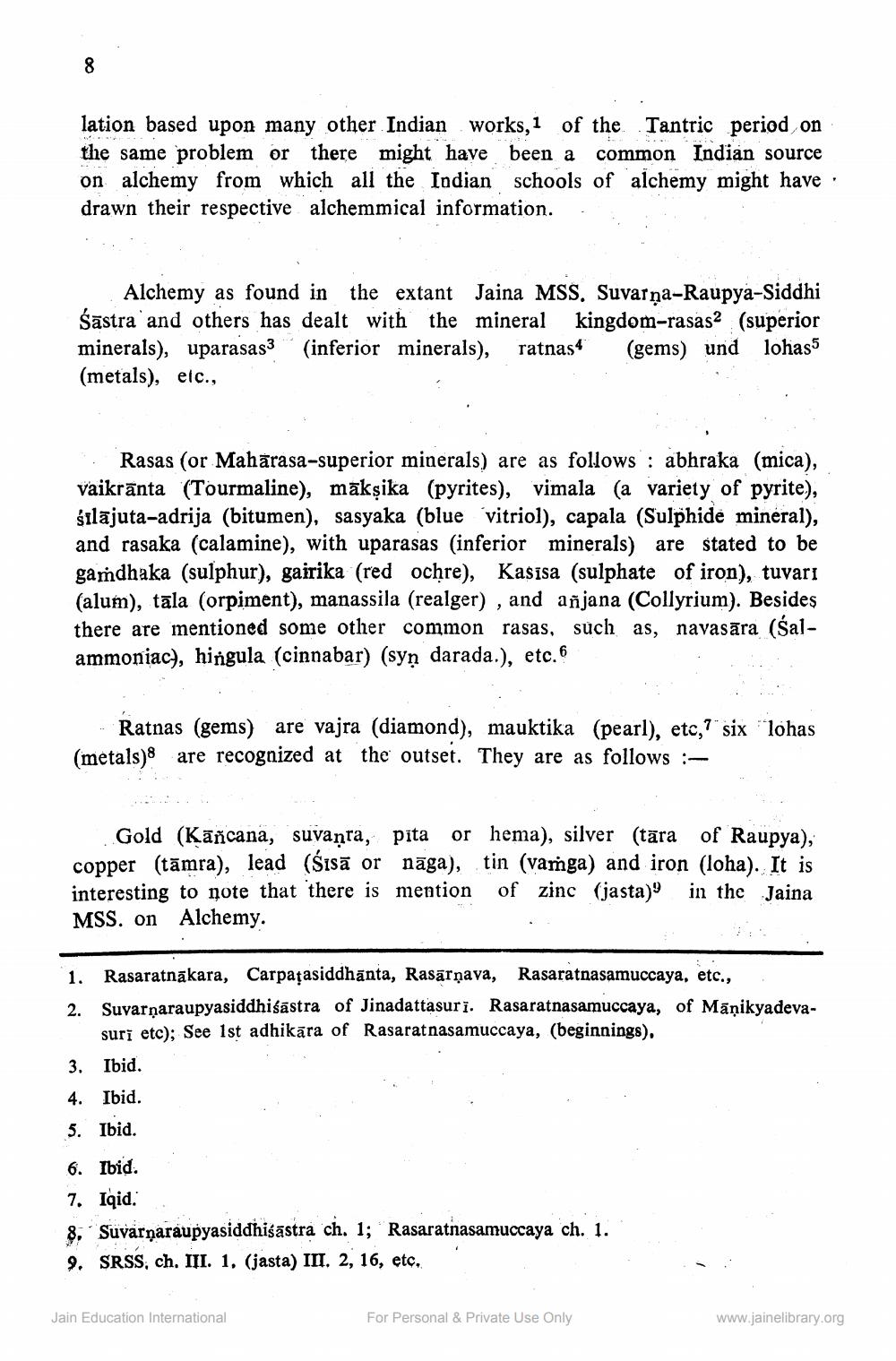________________
lation based upon many other Indian works, 1 of the Tantric period on the same problem or there might have been a common Indian source on alchemy from which all the Indian schools of alchemy might have drawn their respective alchemmical information. .
Alchemy as found in the extant Jaina MSS. Suvarņa-Raupya-Siddhi Śāstra and others has dealt with the mineral kingdom-rasas? (superior minerals), uparasas3" (inferior minerals), ratnas4 (gems) und lohas5 (metals), etc.,
• Rasas (or Mahārasa-superior minerals) are as follows : abhraka (mica), vaikrānta (Tourmaline), mākṣika (pyrites), vimala (a variety of pyrite), śılājuta-adrija (bitumen), sasyaka (blue vitriol), capala (Sulphide mineral), and rasaka (calamine), with uparasas (inferior minerals) are stated to be gaṁdhaka (sulphur), gairika (red ochre), Kasīsa (sulphate of iron), tuvarı (alum), tāla (orpiment), manassila (realger), and añjana (Collyrium). Besides there are mentioned some other common rasas, such as, navasāra (salammoniac), hingula (cinnabar) (syn darada.), etc. 6
Ratnas (gems) are vajra (diamond), mauktika (pearl), etc,?" six "lohas (metals) are recognized at the outset. They are as follows :
Gold (Kāñcana, suvaņra, pita or hema), silver (tāra of Raupya), copper (tāmra), lead (Śisā or nāga), tin (vaṁga) and iron (loha). It is interesting to note that there is mention of zinc (jasta)” in the Jaina MSS. on Alchemy.
1. Rasaratnākara, Carpațasiddhanta, Rasārņava, Rasaratnasamuccaya, etc., 2. Suvarnaraupyasiddhiśāstra of Jinadattasuri. Rasaratnasamuccaya, of Māņikyadeva
suri etc); See 1st adhikara of Rasarat nasamuccaya, (beginnings). 3. Ibid. 4. Ibid. 5. Ibid.
6. Ibid. 7. Iqid. 8. Suvarmaraupyasiddhisāstra ch. 1; Rasaratnasamuccaya ch. 1. 9. SRSS, ch. III. 1, (jasta) III. 2, 16, etc.
Jain Education International
For Personal & Private Use Only
www.jainelibrary.org




